“Is it the form of the clouds, or the tints of the sky, or the colours of the surrounding objects which are so changeable, which have troubled my thoughts as they passed before my eyes? Who can tell?” Le Horla [The Horla] (Jean-Daniel Pollet, 1966)
Aug
19
violet
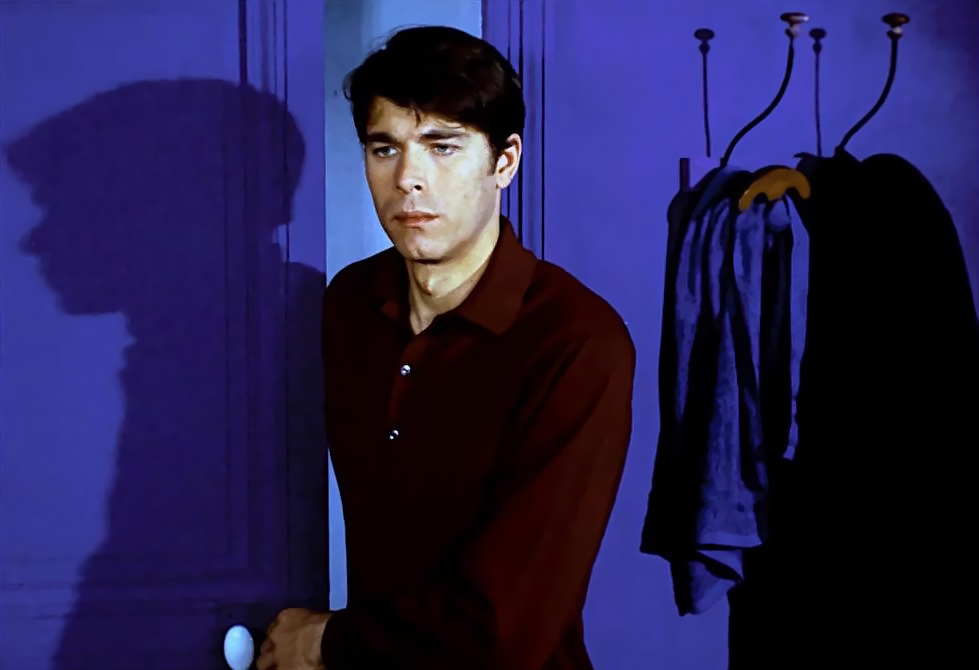
The narrator enters a violet-blue room via a lavender-purple corridor (via). DP: Jean-Jacques Rochut.
Violet: a building or structure *
– Guy de Maupassant, Le Horla, 1887 (via)
Objects and rooms have distinct colours ranging from the deepest blues and violets to a pale lavender, a muted silver and shocks of yellow. The usage of colour in Le Horla is striking throughout and reminds me of how Van Gogh's paintings became increasingly colourful as his madness enveloped him.
* the Bales 2025 Film Challenge for August is not date-related but lists, for the most part, the colours of the rainbow.
bales2025filmchallenge
“He moved over to the window: a smallish, frail figure, the meagreness of his body merely emphasized by the blue overalls which were the uniform of the party. His hair was very fair, his face naturally sanguine, his skin roughened by coarse soap and blunt razor blades and the cold of the winter that had just ended. “Nineteen Eighty-Four (Rudolph Cartier, 1954)
Aug
18
indigo
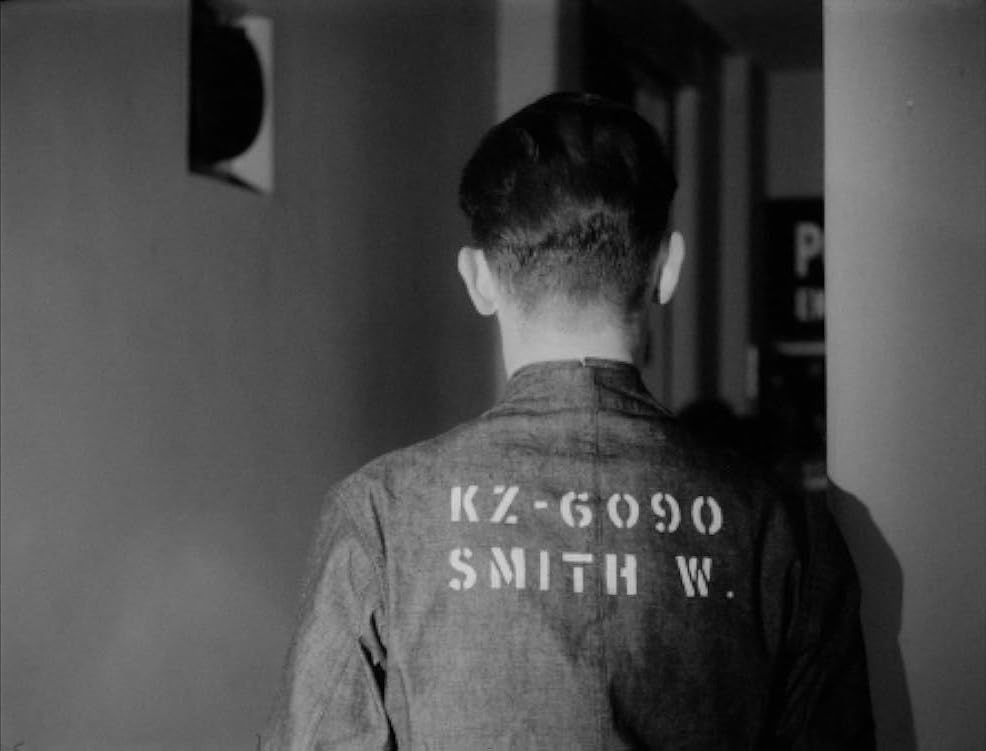
Winston Smith (Peter Cushing). We only see his frail looking back with the identifier KZ-6090, and his name SMITH W.
Indigo, in food or fashion*
– George Orwell, Nineteen Eighty-Four (1949) (via)
* the Bales 2025 Film Challenge for August is not date-related but lists, for the most part, the colours of the rainbow.
“Pray for me. I forgive the evil done me.”
Procès de Jeanne d'Arc [The Trial of Joan of Arc] (Robert Bresson, 1962)
Aug
17
forgiveness
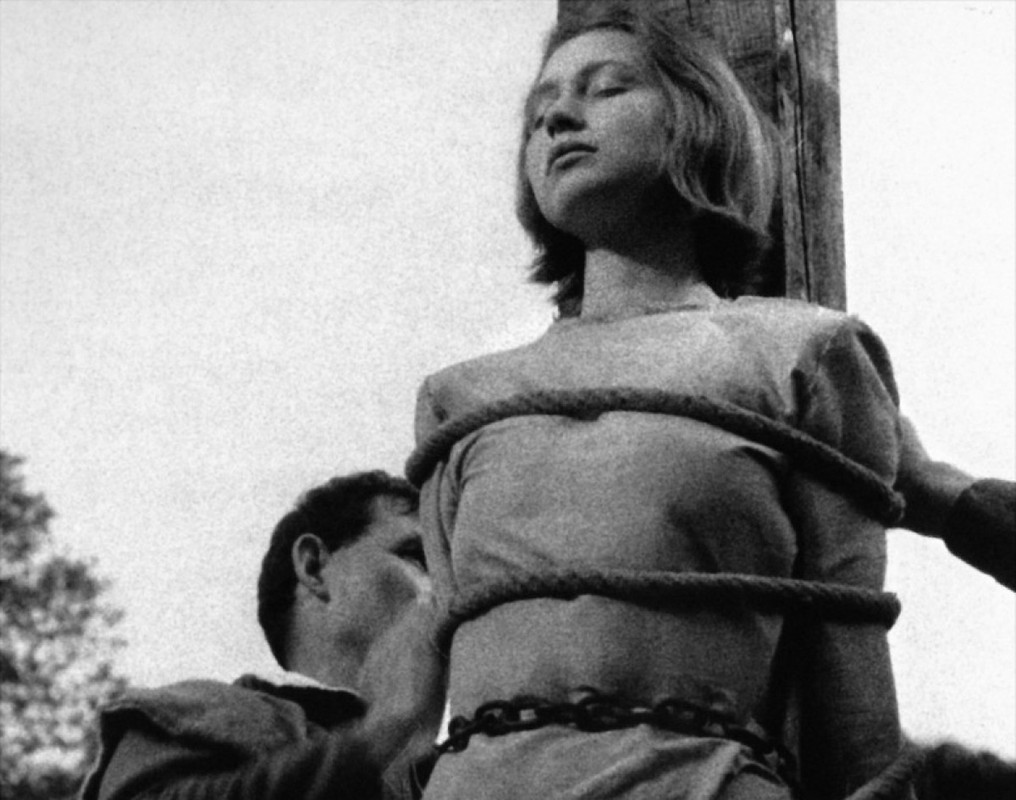
Jeanne (Florence Delay) bound to the stake. DP: Léonce-Henri Burel.
Holi: someone is forgiven (forgiveness being an important aspect of Holi)*
– Jeanne d'Arc
Jeanne trusts her delusions to forgive the people who brought her to justice.
* the Bales 2025 Film Challenge for August is not date-related but lists, for the most part, the colours of the rainbow.
Him: It’s a film?
Her: It would have been a film.
Le camion [The Lorry] (Marguerite Duras, 1977)
Aug
16
indigo
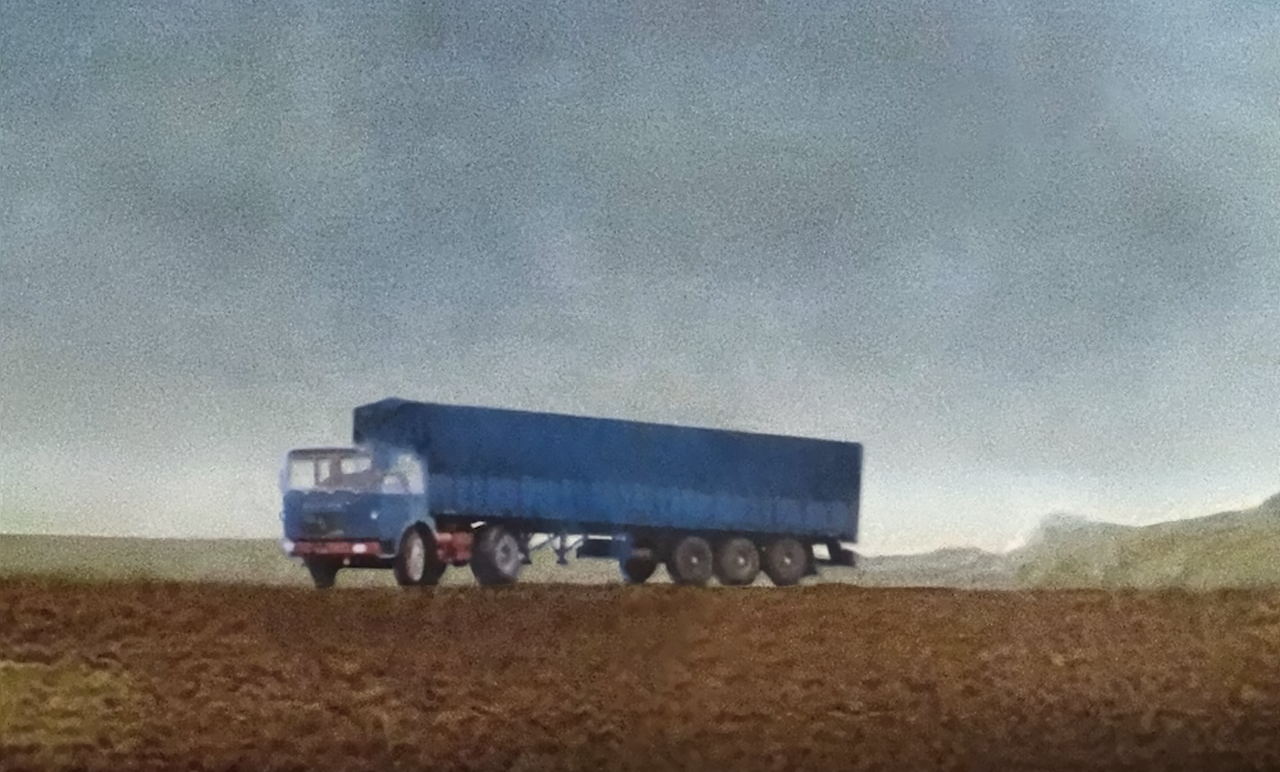
Indigo: a building or structure*
A truck, both the narrative structure and his (Depardieu's character) material representation. She – the director – and he – the lead actor – do a read-though while discussing her script. A communist truck driver picks up a female hitchhiker. They discuss the landscape, the cosmos, pointlessness, communism of course. All the while, the indigo truck plods on.
* the Bales 2025 Film Challenge for August is not date-related but lists, for the most part, the colours of the rainbow.
“I'm just fine. I have everything here. I have the TV. You can see the whole world” Trois couleurs: Bleu [Three Colors: Blue] (Krzysztof Kieślowski, 1993)
Aug
15
cerulean

Julie (Juliette Binoche) in a blue wallpapered room, observes blue beads suspended in front of a window with a cerulean sky and ocean behind it. Throughout the story, her clothing changes from white, to black, to the darkest charcoal blue, to Prussian blue. DP: Slawomir Idziak.
Cerulean, or blue: in food or fashion*
– the mother
How could I not pick at least one instalment of Kieślowski's Trois couleurs trilogy. Here's blue, the liberté of the tricolor. Blue occurs as the sky to fall through, the room without life, and the cloth that binds.
* the Bales 2025 Film Challenge for August is not date-related but lists, for the most part, the colours of the rainbow.
“The painter takes his time. He doesn't like her dress. He doesn't like her gloves. One day he asks her if she dares pose for him – all in pink. She dares! And the king, enraptured by her pose, offers her a palace!” Lola Montès (Max Ophüls, 1955)
Aug
14
Bavaria
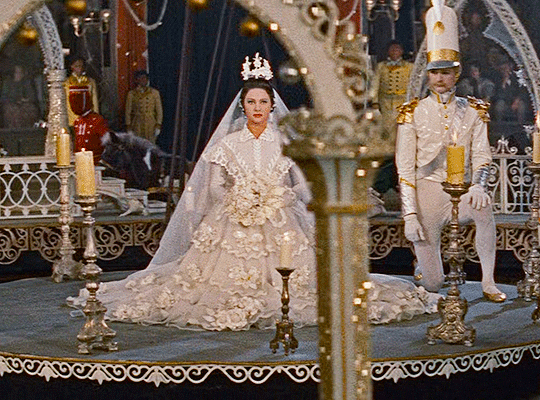
The crowned royal mistress on display in glorious Eastmancolor (via). DP: Christian Matras.
Celebrating Oktoberfest [in September/October] and the Bavarian royals [rip]: a royal character or family*
– circus master
Maria Dolores Porriz y Montez, Countess von Landsfeld, Lola Montès for short, now a circus attraction, once the mistress to Ludwig I, King of Bavaria. While her fellow circus performers play Lola's former lovers, the ringmaster tells her story.
* the Bales 2025 Film Challenge for August is not date-related but lists, for the most part, the colours of the rainbow.
“Eh, i sogni a volte insegnano male, Dùnya, perché la verità intera non è mai in un solo sogno, la verità intera è in molti sogni.” Il fiore delle mille e una notte [Arabian Nights] (Pier Paolo Pasolini, 1974)
Aug
13
cerulean

The entrance of the Shah Mosque as seen in the film. The seven colours of the tile work are reflected in the extras' costumes. DP: Giuseppe Ruzzolini.
Cerulean, or blue: a building or structure*
One of the many exotic locations is the مسجد شاه, [Masjed-e Shah, or Shah Mosque] in Iran with its otherworldly blue and blue-adjacent tiles.
* the Bales 2025 Film Challenge for August is not date-related but lists, for the most part, the colours of the rainbow.
“She'd discovered a small beach far from town, with crystal-clear water and pink sand. She loved that spot. The colors of nature were so beautiful, and there was no noise. She'd leave only when the sun did too.” Il deserto rosso [Red Desert] (Michelangelo Antonioni, 1964)
Aug
12
green
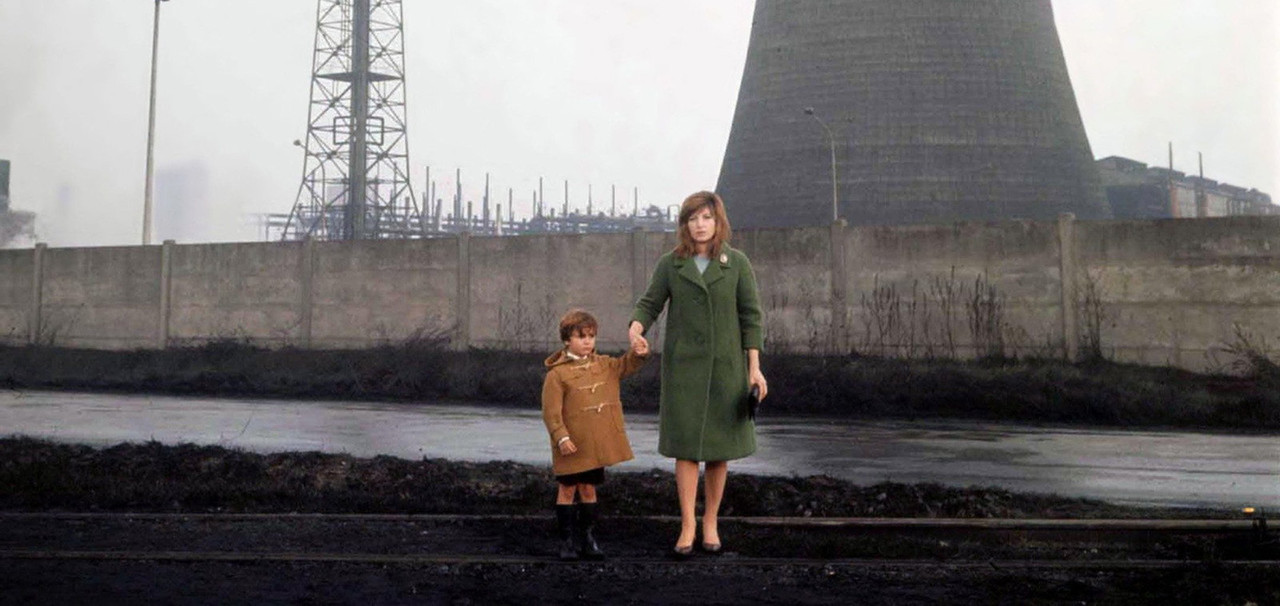
Valerio (Valerio Bartoleschi) and his mother Giuliana (Monica Vitti) in an arid industrial landscape. Giuliana wears a brilliant green coat, its shade between pea and moss, depending on the drabness of her surroundings. DP: Carlo Di Palma.
Green, in food or fashion*
– Giuliana
Antonioni's first film in colour beautifully utilises Vitti's brilliance – of her auburn hair, her porcelain teint, her vivid costumes (by Paola Carloni) – against the drab landscape.
* the Bales 2025 Film Challenge for August is not date-related but lists, for the most part, the colours of the rainbow.
آداب بهاری [Adab-e Bahari / Rites of Spring] (Ali Asghar Agahbanaei, 1982)
Aug
11
spring
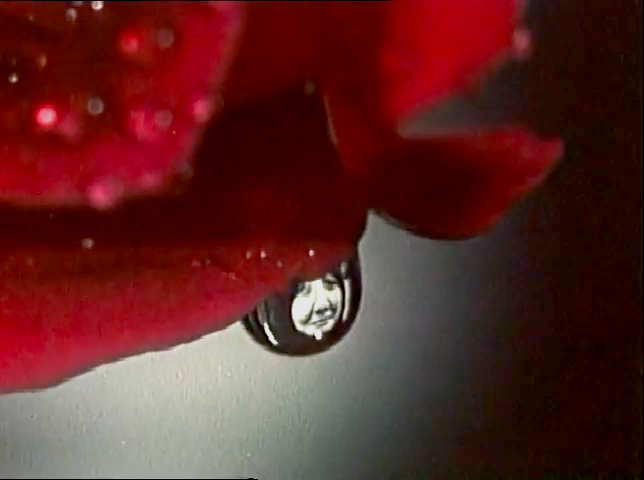
In a dewdrop hanging from a rose, the face of a smiling woman appears.
Dita e Verës, a pagan spring celebration from Albania, celebrated in March: a spring scene*
The restless anticipation of spring. Iran as it was before and after the 1979 toppling of the Shah. While the snow melts away, the Revolution takes place, and fresh buds appear on the rose bushes. A poem.
* the Bales 2025 Film Challenge for August is not date-related.
“That's all the people we've got now. We'll get there somehow.” Хлебный день [Khlebnyy den / Bread Day] (Sergei Dvortsevoy, 1998)
Aug
10
green
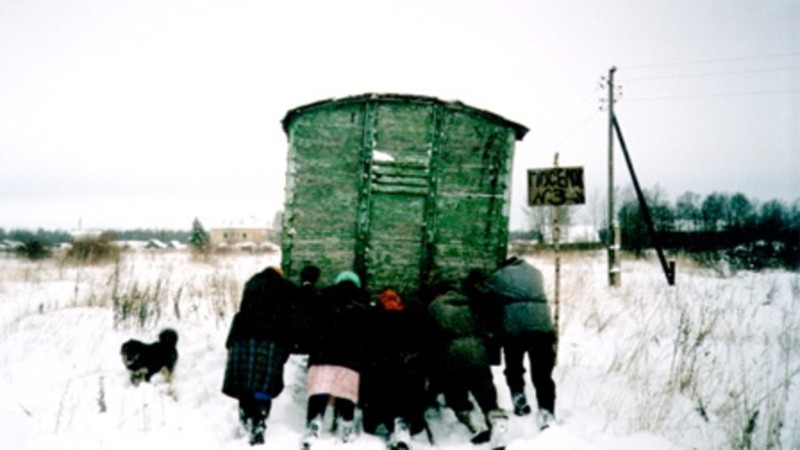
The old folks pushing the cart past the hamlet's name sign. With thick brush strokes, almost too much for the small rectangle, it reads TOWNSHIP NR. 3. DP: Alisher Khamidkhodzhaev.
Green: a building or structure*
Where the old folks' hands push the cart, the green's worn off. That doesn't change anything about its importance. A lifeline, bread, is delivered once a week and with delivered, it means that the carriage is left on the rails, several kilometers away from Zhikharevo, or Township Nr. 3, which in its turn is about 80 km away from Saint Petersburg. It takes the seniors about two hours to get the wagon to their hamlet. We get to witness ten minutes or so. It lasts a lifetime.
As of 2002, only three people lived in Zhikharevo. I wonder how the wain comes home now.
* the Bales 2025 Film Challenge for August is not date-related but lists, for the most part, the colours of the rainbow.